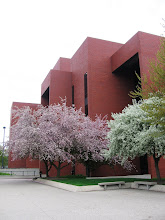University Libraries’ Public Catalog Connects to Google Books
The University Libraries have launched an exciting new discovery tool that increases the scope of desktop, point-and-click digital information delivery through the University Libraries, offering Ball State’s students and faculty a more robust and integrated virtual library experience.
This powerful new feature connects CardCat (the University Libraries online catalog) records to digital copies of books found in the expansive Google Book Search Project (GBSP). Now students and faculty performing research in CardCat can read excerpts or even the full-text of books by clicking on the Google Preview button or using the embedded Google Book’s reader located at the bottom of the record.
According to Dr. Arthur W. Hafner, Dean of University Libraries, “This innovative new application developed by our librarians greatly expands the volume of resources that the Libraries offer to Ball State students and faculty to achieve their educational and research objectives.”
The GBSP, a massive book digitization project begun in 2004, now includes nearly seven million books available through agreements with authors, publishers, and civic, academic, and special libraries. Through Google’s private contracts, library partnerships, and a pending legal settlement with authors, nearly 70% of the seven million books in GBSP are available for limited preview or full-text viewing. Limited previews of books are offered when a book is still in copyright. In this case, rights holders decide how much of the book will be made available online. Full-text viewing is available when a book is considered to be in the public domain, typically titles published before 1923.
While not all books in CardCat have a counterpart in Google Books, Google Preview greatly enhances the value of the Libraries’ catalog as a research portal for those items that have a link, creating a more engaging experience for the user. In addition to providing book covers, when available, students and faculty realize the real value of the service since they are able to browse or read books from their desktop. Researchers can evaluate a resource from the desktop and make informed research selections before visiting the Libraries’ stacks.
The University Libraries are fully invested in information-delivery innovations that help students and faculty discover the rich resources offered through our broad print and digital collections.
The launch of the Google Book Search Preview within the Libraries’ CardCat is just one more way in which the Libraries support teaching, learning, and research through the continual expansion of information access, redefining education and research in an environment of seamless knowledge discovery and increased digital integration.
For more information, contact Matthew C. Shaw, Collections Development Librarian, MCShaw2@bsu.edu, 765-285-1302.
Labels: books, cardcat, Google Book Search Project





